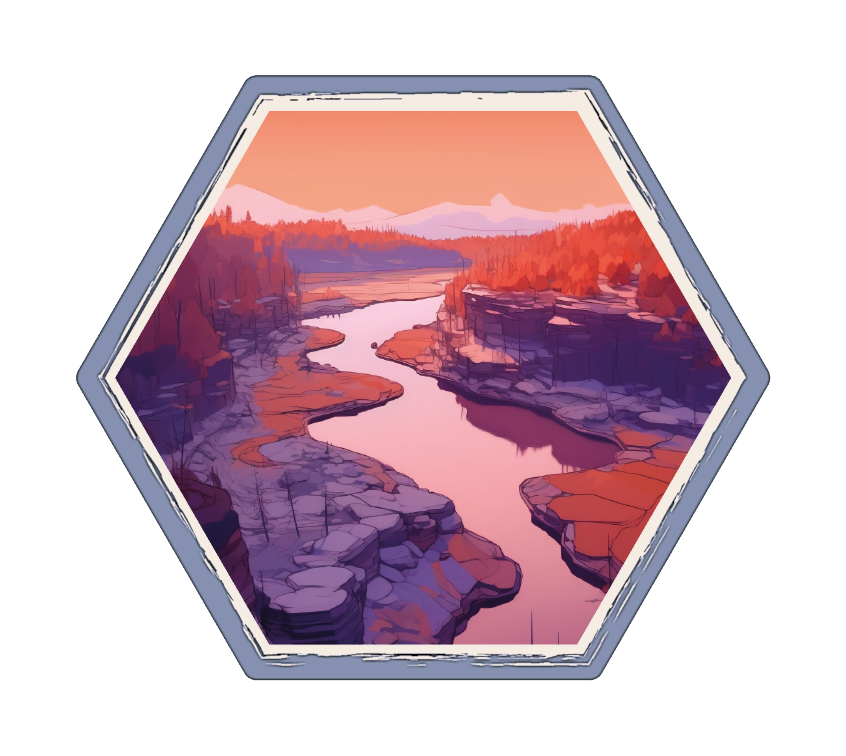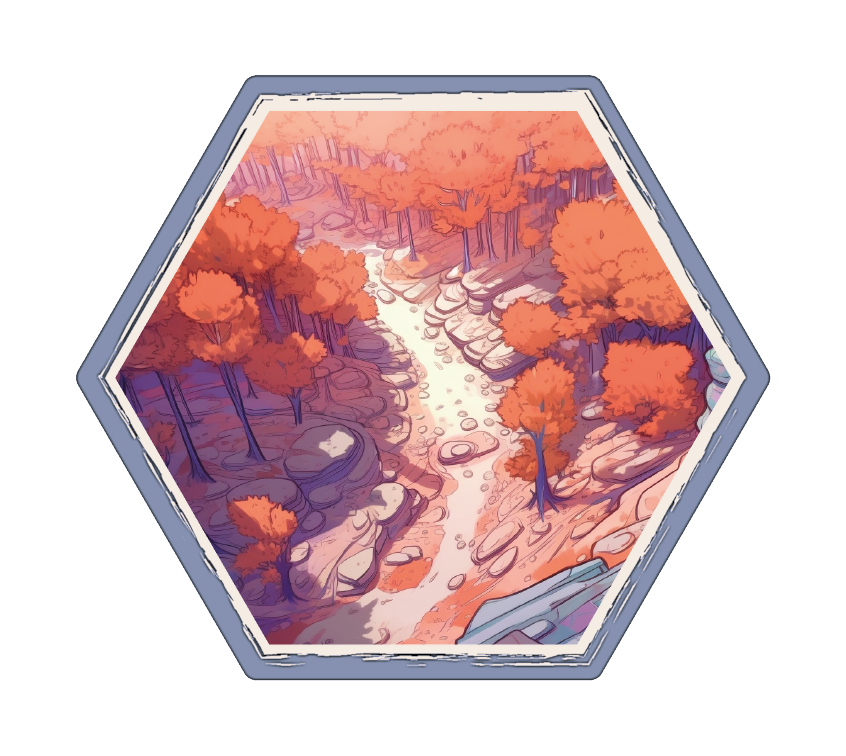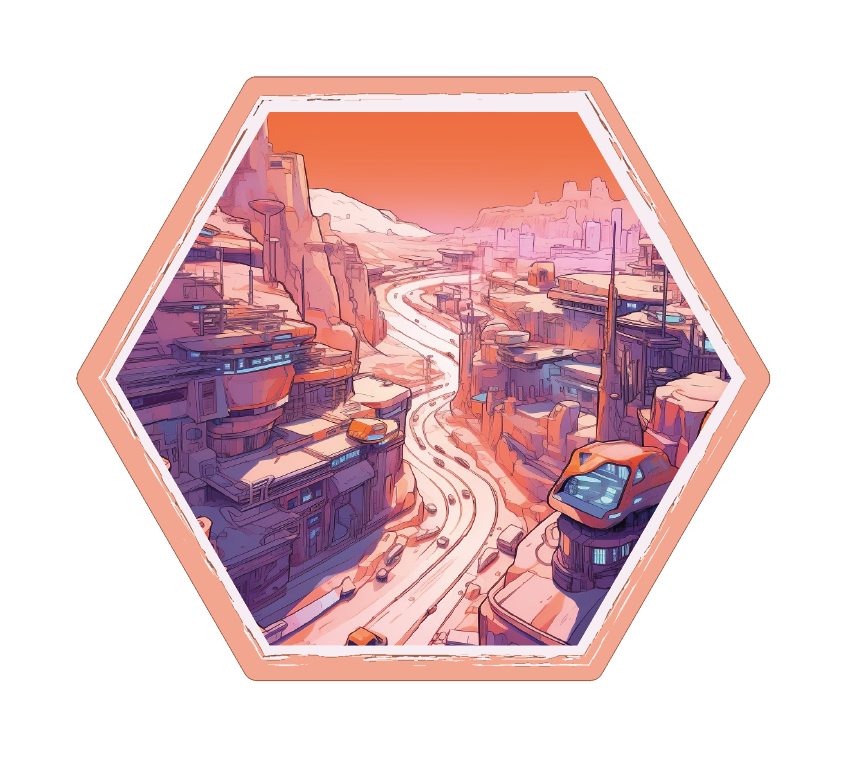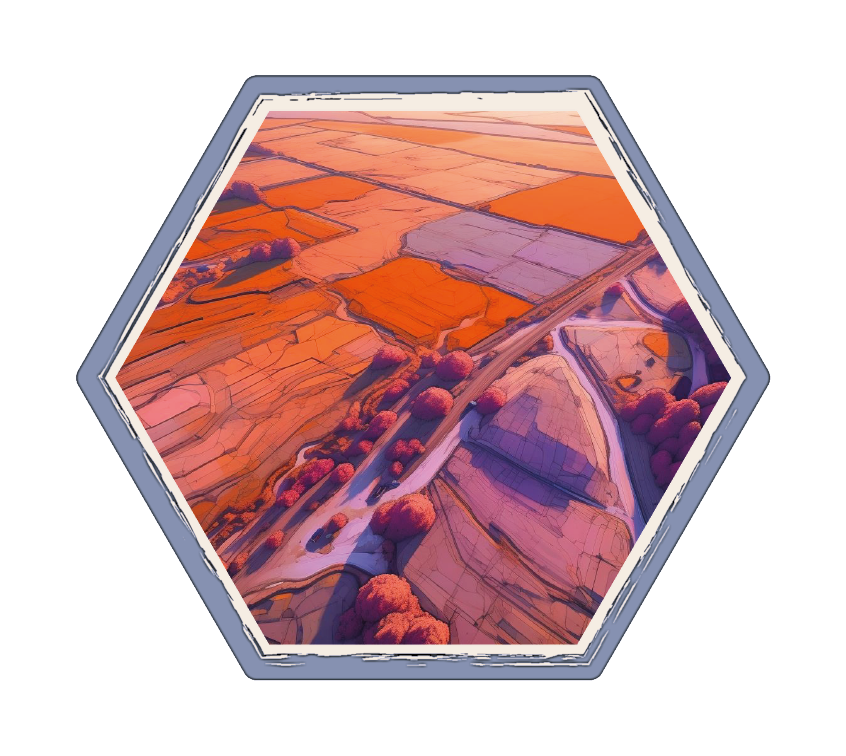

This ice-breaking board game motivates players to learn about each other and work together to build iTown, a fictional town located on one of Jupiter’s moons. The main aim is to connect the citizens of the surrounding areas to the town with roads. The game facilitates learning about one another, learning to design together and reach compromises. It achieves this through the playing cards provided by the game master. The game master guides the players. The game cards are made to insight discussion and allows players to reach an agreement/solution for the problem on the card.
The game master oversees creating a smooth experience for the players. In the beginning he sets up the map tiles, the first few iTown buildings, as well as the settlements located around the map according to the seed card.
After presenting each action card (see explanation below) the game master explains what kind of establishment the players must build and gives them a limited amount of time to plan out their argument and create a design for each players idea. The players are provided with a notebook guide that is explained by the game master and asks them to answer specific questions, this is where they fill in their arguments and ideas as well as personal information relating to the action card.
After this, there is a set sharing and discussion time for the players to come to an agreement and plan out a design for the building. At the end of each round the game master will collect the notes and ask two questions to random players about specific details from the other players’ notes. If the players answer all questions correctly, they will obtain the maximum number of roads for the round which they can place on the map and will allow them to connect the settlements to the town throughout the game.
When a settlement is connected to iTown, asocial card (see explanation below) is provided to the players. The game master must give the players time to write down their thoughts, on a separate paper and then give them time to share and discuss ideas. It is the responsibility of the game master to give everyone the floor to share and discuss throughout the game, as well as take notes for important and relevant information about theco-designer in order to collect data.
The action cards allow players to design together and to share personal facts about each other. This pushes them to gain a greater understanding of each other’s abilities in a co-design context. The game also incentivises players to pay attention and remember each other’s qualities and interests.
The different themes on the cards such as “exercise”and “entertainment” do not have a specific goal in mind, they are used to inspire the players to share details and information about their past experiences in such locations that in turn inform players about one another. Then players will have a discussion and choose which building/design they want to add to the town. After this, a model will be built by the co-designer of the agreed upon design on their own time (after the game session). In total there are 7 action cards.
The questions asked in the social cards are intentionally designed to allow discussion on topics relevant and familiar to the co-designer. It also allows everyone to share advice that they have gathered through experiencing similar situations as the ones on the cards. An example for this is a card which discusses themes of long-distance relationships with close family. This situation is like the relationship between the case owner and their child. By asking a question we would normally ask the co-designer but instead aiming it at a third party (namely the fictional character), the co-designer can feel less interrogated or intimidated and therefore provide a more valuable and informative answer. The social cards allow players to keep track of their progress since a social card will only be provided once a settlement is connected to iTown. There are 5 settlement and therefore 5 social cards.
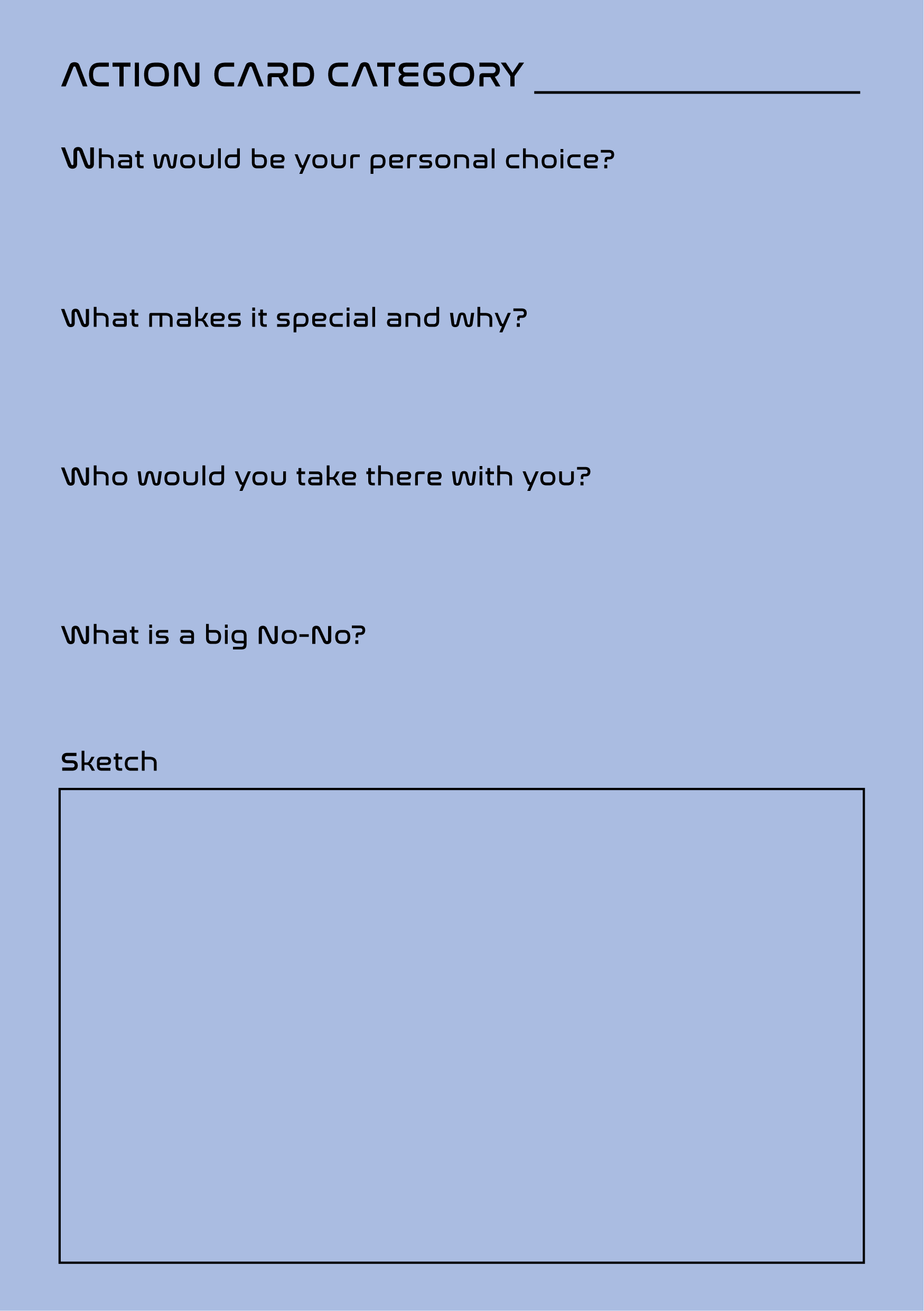
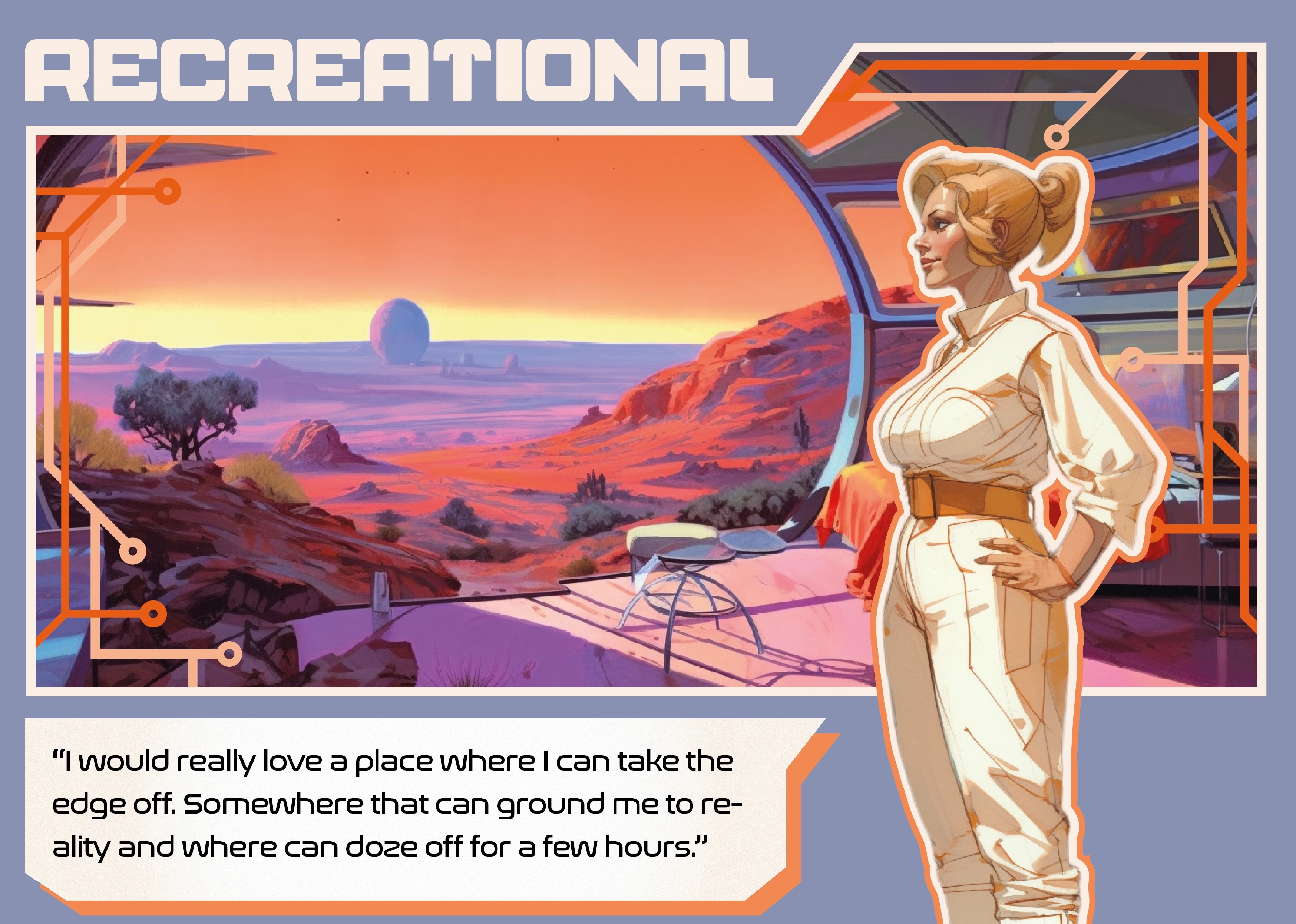
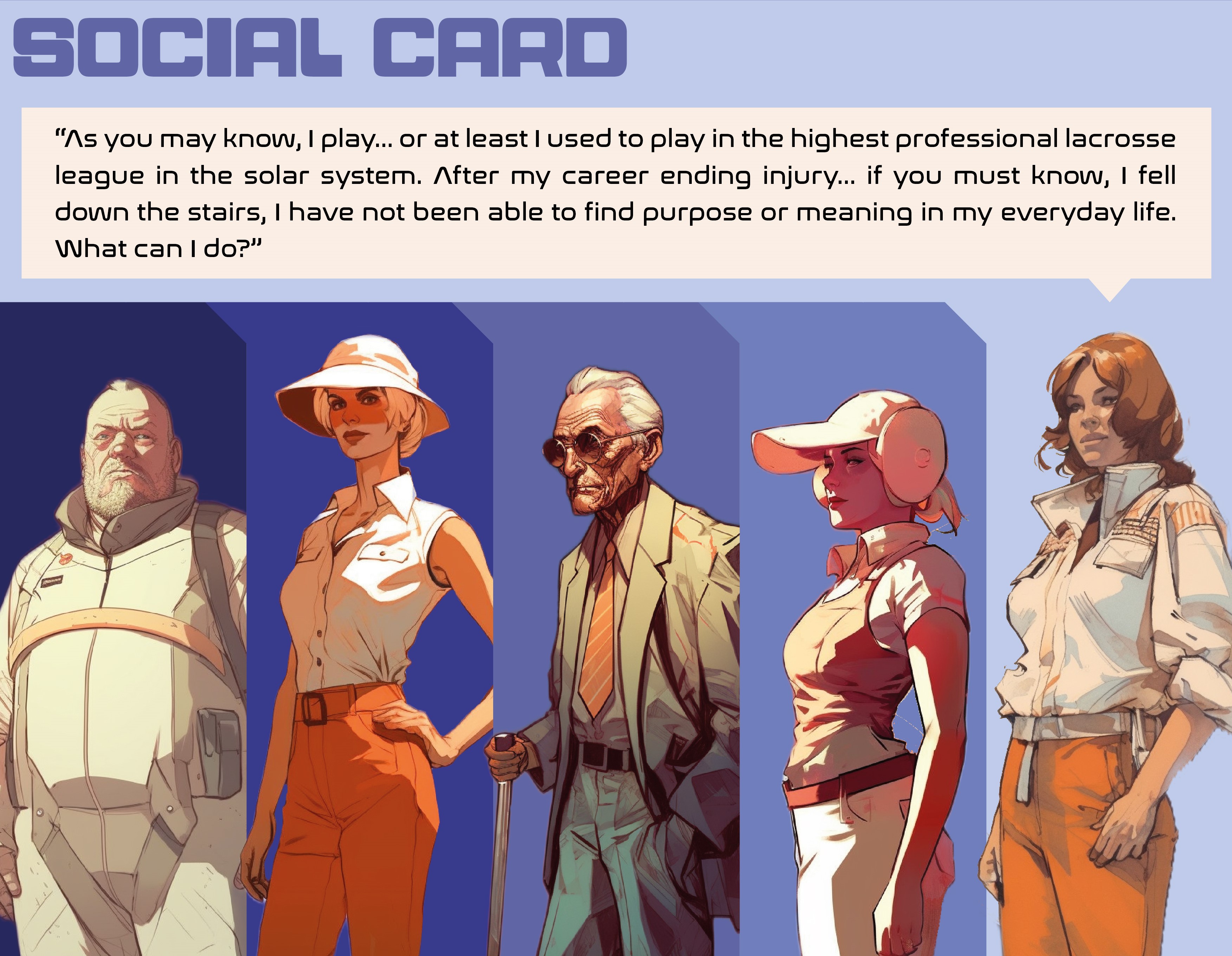
The year is 2112, the earth we previously held dear, is no more, we destroyed it, nuclear fallout climate change, it doesn’t matter, now we have found a new home, a moon of Jupiter, Europa. Here there are many settlements located far from each other. You are a group of settlers and have been challenged to build businesses and attractions in a town known as iTown, this will help attract nearby residents. You will also be rewarded with roads throughout the rounds of the game to connect the settlements to iTown. The final goal of the game is to connect all the settlements to iTown. To achieve this, you will have to work together, discuss effectively, and remember each other’s interests and priorities. Every new location you build will have to be designed and eventually modelled (by Anton with clay). I will be your game master/ game guide and will set the rules and allow you to advance in the game. Best of luck!
Welcome to iTown*! As a group of settlers, you will embark on a journey to expand your small frontier town into your city of dreams. You will need to work together to add new culturally and socially relevant buildings and connect distant settlements with a network of roads. The game is meant to be played in two to three sessions, and you will need to strategise and communicate effectively to win. Are you ready to take on the challenge?
*Not affiliated with Apple Inc.
First, assemble the game board by placing the hexagon game tiles and houses corresponding to the layout on the Seed Map. The Seed Map is a picture of the correctly assembled game board that shows which tiles and houses go were. Each player receives seven notepads and a pen. One person will act as the game master, who will control the flow of the story and introduce new game elements. The game master should be familiar with the game's rules. The Action and Social cards are also placed on the table and will be controlled and narrated by the game master.
As settlers, your goal is to build a thriving city by connecting settlements with roads and adding culturally and socially relevant buildings. The game is played throughout seven rounds, with each round introducing a new category (and thus an Action Card) related to an activity that is needed to create a flourishing city. The game ends after all seven action cards are drawn. The players win if they manage to connect all the distant settlements to the town.
At the beginning of every round, the players receive five roads which they can place roads along the edges of the hexagon tiles with the goal of connecting settlements to the city. After the roads are placed, an Action Card is drawn, and the game master introduces the category and activity related to that card. Players have 10 minutes to come up with an idea (writing it down and then sketching it out on the notepads) for what that building should be. After that, all ideas are discussed for 5 minutes by the players, and the best one is chosen. This design will be built by the co-designer in their own time with the materials provided (namely clay).
At the end of the round, the game master will ask two of the players a question regarding the topics discussed prior. For every wrong answer, one road will be subtracted at the beginning of the next round, making it more difficult to connect all of the settlements. If players manage to connect a settlement to the town via the roads, a Social Card is drawn, and the game master introduces a fictional character from the settlement. Players must discuss a way to help this character.
Remember, the success of the settlement relies on teamwork and communication. Work together to create a thriving town of dreams!
